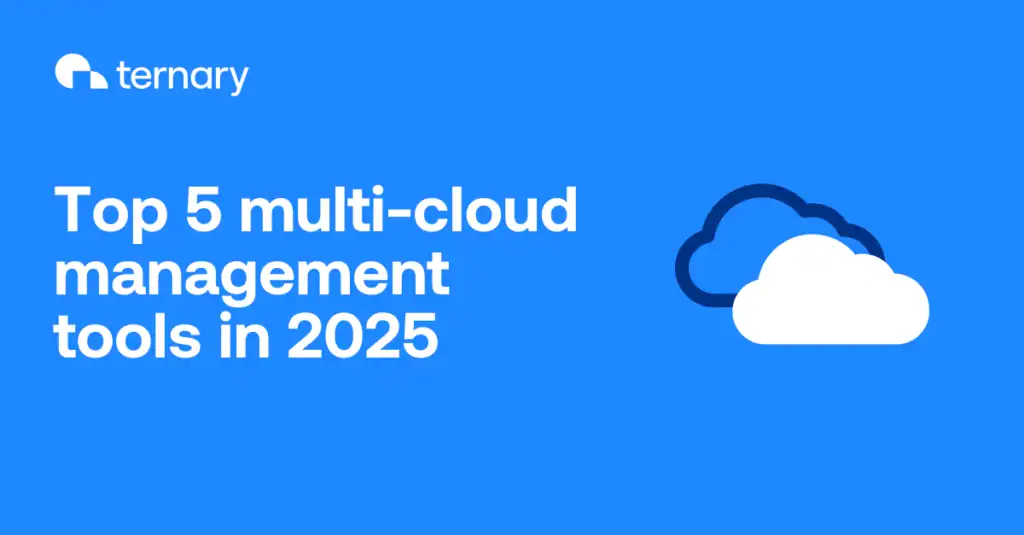Let us guess: your cloud setup isn’t a tidy little dashboard anymore, is it? It has become a cluttered control room. Google Cloud (GCP) over here, Microsoft Azure over there, maybe some AWS running quietly in the background. And oh yeah, that one legacy server nobody dares to turn off. That’s the issue with running multiple clouds.
It sure gives you flexibility, but managing them? That’s where things get ugly. Different consoles, conflicting security rules, and bills that hit like a punch to the gut. That’s exactly where multi-cloud management platforms come in.
In this guide, we’ll explore the top 5 multi-cloud management tools that actually make multi-cloud work (instead of just adding to the mess).
Let’s go through some basics first.
What is a multi-cloud strategy?
Public clouds, which are services offered by vendors to multiple companies, are great, until they’re not. Maybe the price spikes, or an outage hits, or the provider decides to change the rules mid-game.
Issues like these were what birthed the concept of multi-cloud strategy. In this strategy, you use multiple public clouds from different vendors so you’re never stuck when one decides to flake out.
With this strategy in place, you’re not locked in, you’re not overpaying, and you’re not sweating when one provider has a meltdown. In addition, different multi-cloud providers specialize in different things, so you pick the best tool for each job instead of forcing one cloud to do everything badly.
What does a multi-cloud management tool do?
Each cloud provider operates in its own way, with different APIs, dashboards, and weird little quirks that force engineers to constantly switch mental gears.
What runs smoothly in AWS might crash and burn in Azure. Even “standardized” services like Kubernetes have their own vendor-specific headaches (i.e. EKS, AKS, and GKE).
Then there’s the constant struggle to make things actually work together. Applications need to run across clouds, but nothing’s truly plug-and-play. Storage APIs don’t match, authentication methods change like the weather, and even basic tasks like DNS management turn into a game of whack-a-mole.
And don’t get us started on security. Every cloud has its own security model, and applying one provider’s rules to another is like using a bicycle lock on a bank vault. Public storage buckets, misconfigured firewalls, and audit logs scattered across a dozen dashboards create blind spots where threats slip through.
To efficiently cope with all such issues is why we have multi-cloud management platforms. These tools give you a platform to monitor, secure, and optimize everything.
Their key capabilities include:
- Centralized monitoring: One dashboard to track performance, spot issues, and get alerts before users start screaming.
- Security controls: Uniform policies for access, compliance, and threat detection, so you’re not playing whack-a-mole with misconfigurations.
- Automation: Infrastructure as Code (IaC), policy-based scaling, and workflows that reduce human error (because let’s be real, nobody’s perfect).
- Cost management: Near real-time spending analytics and optimization tips so you don’t get ambushed by a six-figure cloud bill.
Top multi-cloud management tools to consider in 2025
The right multi-cloud management platforms bring order to the multi-cloud chaos outlined above. Here are 5 of the best multi-cloud management platforms in 2025.
1. Ternary
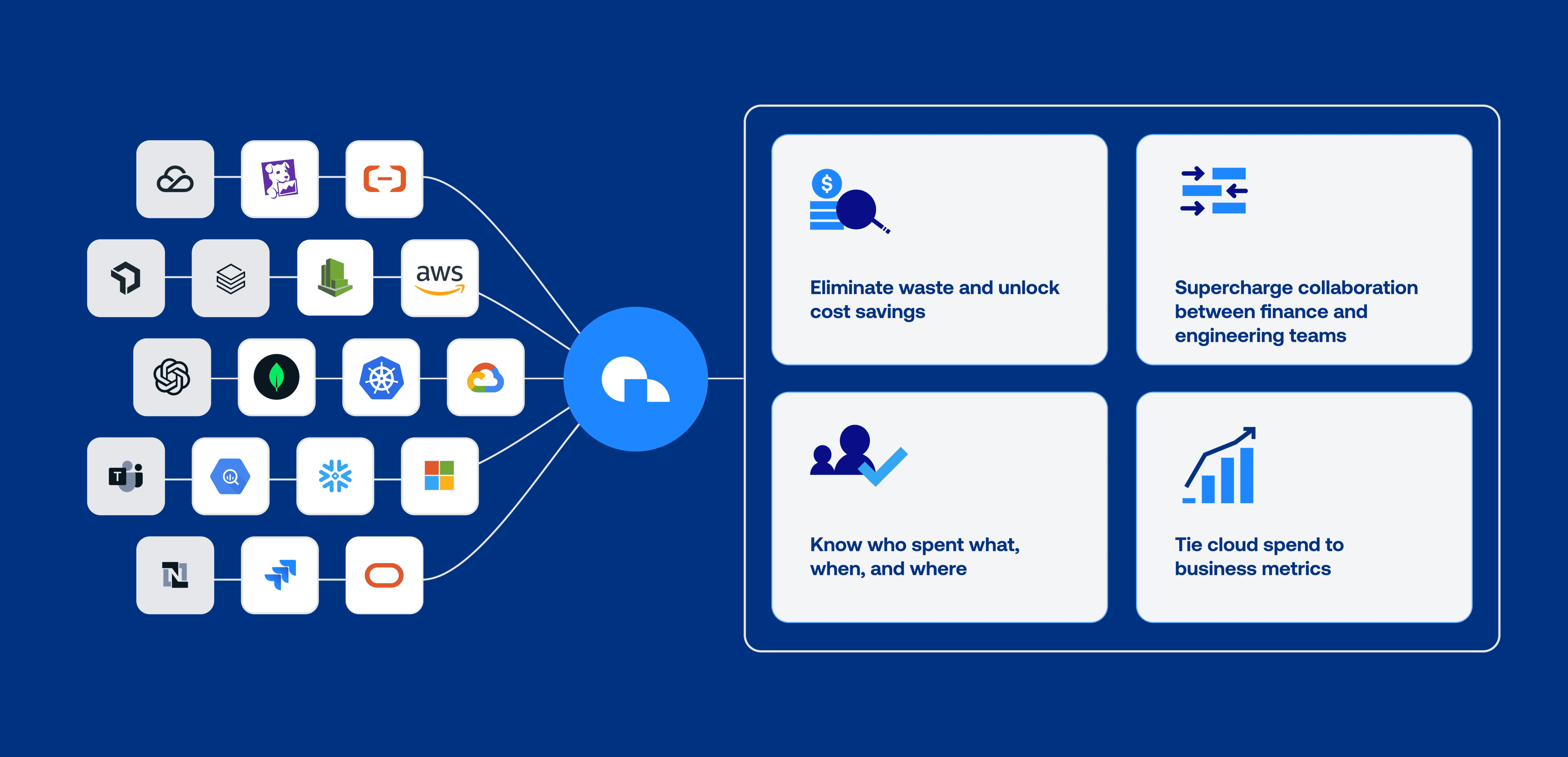
If cloud costs keep you up at night, Ternary is the watchdog you need. It’s a full-scale FinOps platform that monitors and manages multi-cloud spend with great precision. The platform is built for enterprise scale but is intuitive enough for growing teams, too.
Ternary gives Engineering, Finance, and FinOps teams a unified view of where every dollar goes across GCP, AWS, Azure, and beyond. Ternary is also API-first and built to scale, which makes it great at handling sprawling cloud environments without any issues.
The platform not only shows your spend, but also explains why it happened, who’s responsible, and how to fix it. Moreover, it comes with features like ML-powered anomaly detection and optimization recommendations. This means you’ll be actively controlling spend, not just passively monitoring.
As a FinOps Certified Platform, Ternary also embraces industry standards like FOCUSTM. In other words, it can turn messy multi-cloud billing data into clean, and actionable insights.
We’re ingesting the majority of our cloud spend into Ternary, which is something that, prior to this, we’ve never done. Now, we can look at one place, and see how much a project is spending across all of the different clouds and how that spend is trending.
Shah Ahmadzai, Cloud FinOps Manager, The Linux Foundation
Here are the pros and cons of using Ternary.
| Pros | Cons |
|---|---|
| Unified FinOps platform. Built for FinOps with near real-time cost tracking | Requires a fundamental understanding of FinOps to extract full value. (But teams that are new to FinOps and want extra help can work with one of Ternary’s partners!) |
| Designed for multi-cloud. Offers feature parity across AWS, GCP, Azure | |
| Proven scalability. Successfully handles $7.5B+ in annual cloud spend | |
| Predictable pricing. No hidden costs or overages |
2. Terraform
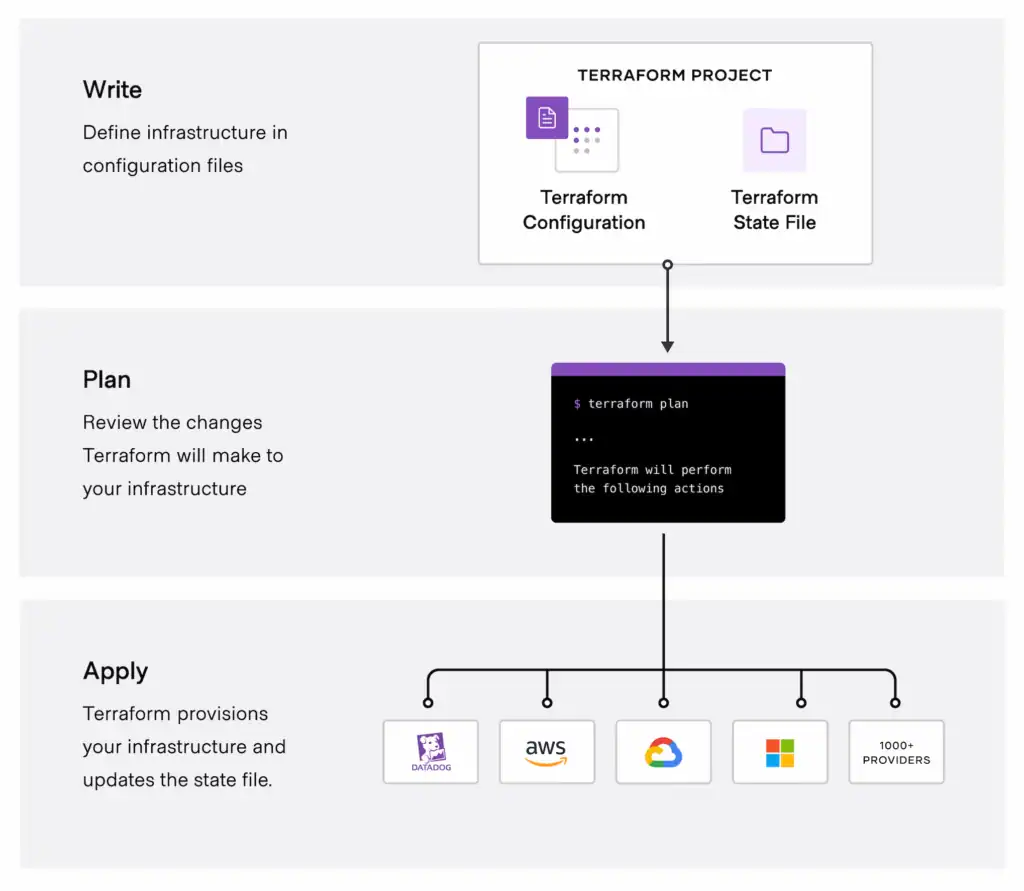
By treating infrastructure as code (IaC), Terraform lets you define and deploy resources across AWS, Azure, GCP, and more using the same declarative syntax.
You will no longer reinvent the wheel for each cloud. Need a VM in AWS and a database in Azure? Terraform handles both with a single workflow that eliminates configuration drift and manual errors. It’s cloud-agnostic by design, which means you’re not locked into one provider’s way of doing things.
That said, Terraform requires DevOps maturity. Teams need to commit to IaC practices and version control.
Here are the pros and cons of using Terraform.
| Pros | Cons |
|---|---|
| Infrastructure as Code (IaC) enables cloud-agnostic deployments | Learning curve for teams new to DevOps or version control |
| Reduces config drift with declarative syntax and automation | Doesn’t manage costs, policies, or monitoring—IaC only |
| Open-source core with a huge ecosystem and community | Requires discipline and governance to prevent chaos in large orgs |
| One workflow to manage multi-cloud resources | Sensitive to misconfigured states, which can break environments |
3. Morpheus

If your cloud setup is a mix of:
- Old-school data centers
- Random public clouds
- And that one legacy system nobody dares to touch
Morpheus is the tool that can hold it all together. Morpheus gives you a single dashboard to provision data across AWS, Azure, GCP, and even old VMware setups without losing your mind (and your cool).
Need a VM in Azure and storage in AWS? Check. Want to slap guardrails on costs and permissions so your team doesn’t go rogue? Morpheus does that too.
This multi-cloud management software actually talks to your ancient systems. Nutanix, OpenStack, Dell’s weird storage thing, Morpheus doesn’t care. It’ll automate workflows across all of them while keeping finance happy with consolidated billing reports.
Here are the pros and cons of using Morpheus.
| Pros | Cons |
|---|---|
| Single dashboard for AWS, Azure, GCP, VMware, and legacy systems | Interface may feel dated compared to newer platforms |
| Workflow automation for old infrastructure setups | Requires training to fully utilize enterprise-grade capabilities |
| Helps with cost guardrails and policy enforcement | Some users find documentation lacking depth for niche integrations |
4. Nutanix cloud manager
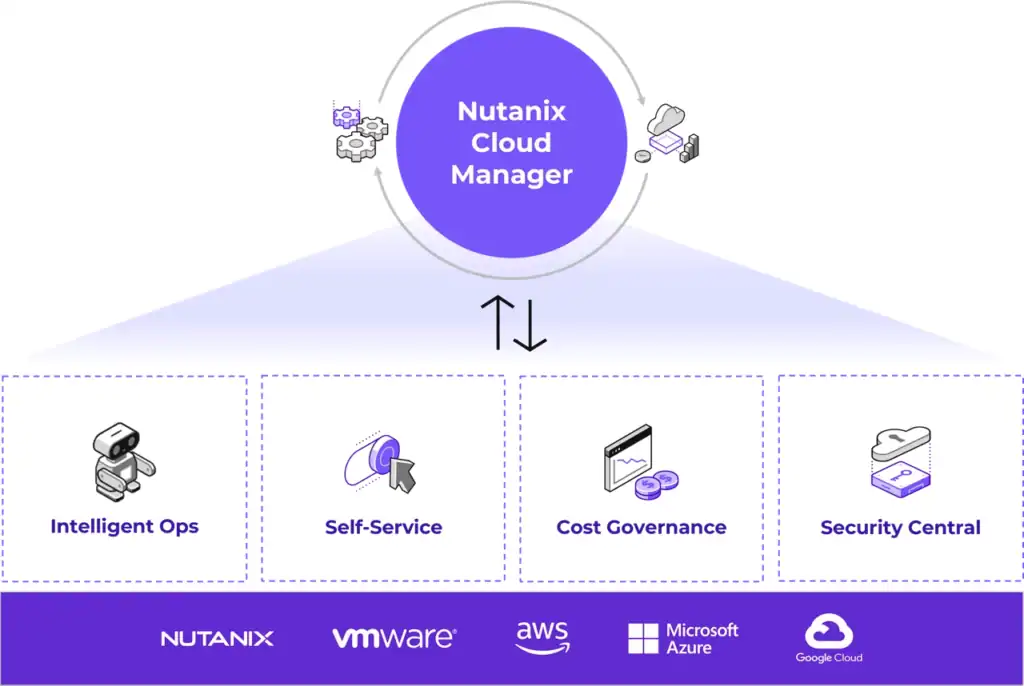
Not everyone gets to go full cloud-native, okay? Some of us are stuck babysitting on-premises servers while juggling a couple of public clouds. That’s where Nutanix Cloud Manager (NCM) comes in.
NCM’s whole deal is bridging the gap between your dusty old servers and shiny new cloud tools. It gives you one control panel for everything: provisioning, cost allocation/controls, security policies, and recently, AI-powered automation.
On one hand, the self-service portal means teams can grab what they need without begging IT. On the other hand, quota enforcement keeps cloud spend from spiraling into a nightmare.
It’s not as flashy as pure-play cloud tools, but that’s the point. NCM is for mature teams that need to manage hybrid chaos without hiring an army of specialists.
Here are the pros and cons of using Nutanix Cloud Manager.
| Pros | Cons |
|---|---|
| Ideal for hybrid environments, bridging on-premises and cloud | Not a pure cloud-native platform, so it may lack modern cloud-native features |
| Centralized control panel for provisioning, costs, and security | Some users report limited flexibility in complex public cloud automation |
| AI-powered automation for resource management and policy enforcement | Geared towards existing Nutanix customers—less ideal for cloud-only teams |
| Self-service portal for devs + quota enforcement for finance | Can be a costly investment for smaller orgs |
5. Lacework
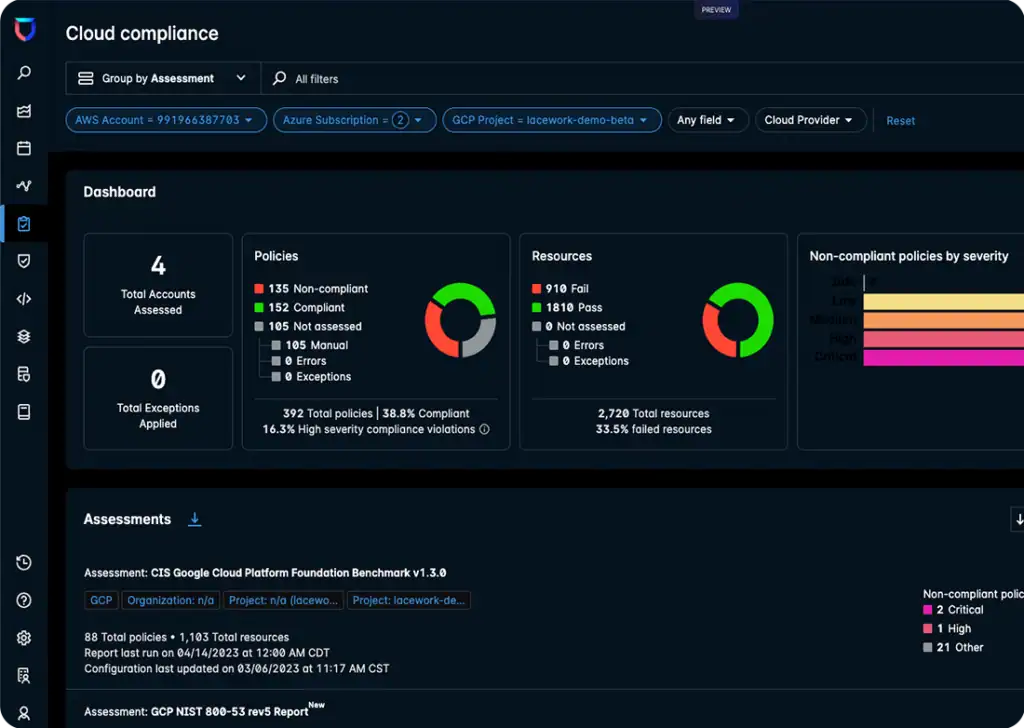
Let’s be real, securing one cloud is hard enough. Try doing it across three while some dev keeps spinning up unsecured Kubernetes clusters. Lacework is the multi-cloud management platform that actually makes this manageable. It watches everything. AWS, Azure, GCP, even your complex hybrid setup.
Lacework’s always-on monitoring catches misconfigurations before hackers do, whether it’s a public S3 bucket or a sketchy firewall rule in Azure. The compliance engine auto-checks for HIPAA, PCI DSS, and other alphabet-soup regulations so you’re not scrambling before audits.
It doesn’t just display security pop-ups that say “THIS IS UNSAFE!” It tells you how to fix it. You’ll get automated remediation tips, CI/CD pipeline checks, and a unified asset inventory so you know what’s running where.
Here are the pros and cons of using Lacework.
| Pros | Cons |
|---|---|
| Multi-cloud security monitoring with support for AWS, Azure, GCP | Initial configuration may take time if your cloud setup is already messy |
| Automated compliance checks for standards like PCI, HIPAA, etc. | Some advanced features are locked behind enterprise plans |
| Provides actionable remediation tips, not just alerts | Could generate a lot of alerts if baseline policies aren’t tuned |
| Unified asset inventory and CI/CD pipeline checks | Not suited for organizations just starting their cloud journey |
Simplify multi-cloud cost chaos with Ternary
Alright, let’s recap. We’ve covered the best multi-cloud management platforms that can save you from drowning in dashboards, surprise bills, and security nightmares, among other issues.
But here’s the thing. You could stitch this all together yourself with duct tape and prayers. Or you could use Ternary and actually sleep at night. Ternary helps your team focus on maximizing value instead of firefighting.
Why keep wrestling with spreadsheets and fragmented tools? Let Ternary handle the heavy lifting.
